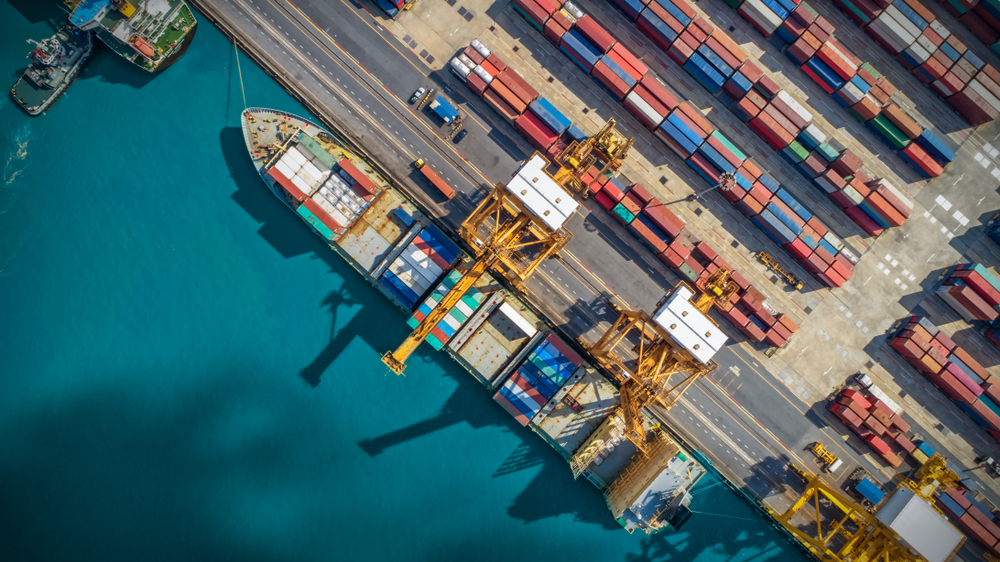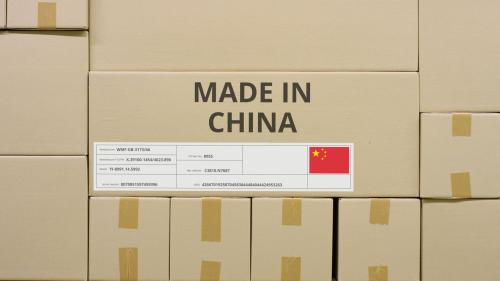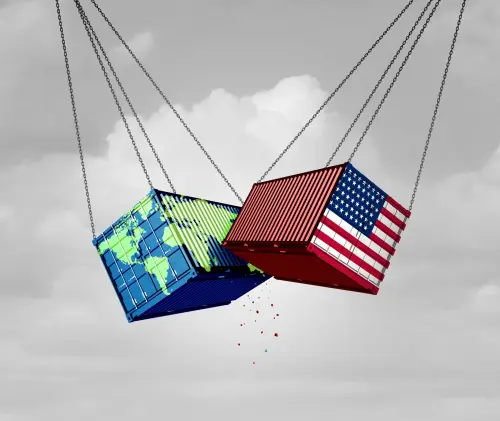The paper summarized here is part of the Fall 2023 edition of the Brookings Papers on Economic Activity (BPEA), the leading conference series and journal in economics for timely, cutting-edge research about real-world policy issues. The conference draft of this paper was presented at the Fall 2023 BPEA Conference (recordings and slides are available via the link). The final version was published in the Fall 2023 issue by Johns Hopkins University Press. Submit a proposal to present at a future BPEA conference here.
Download final paper with online appendix, discussion comments, and general discussion summary
U.S. manufacturers rely far more on China than standard calculations suggest and, consequently, reducing U.S. exposure to China will be difficult and costly, suggests a paper discussed at the Brookings Papers on Economic Activity (BPEA) conference on September 28.
Standard measures of supply-chain reliance look at the origin of imported goods used to make U.S. products. The paper, “Hidden Exposure: Measuring U.S. Supply Chain Reliance,” goes beyond this “face-value” measure. It uses input-output analysis to account for the fact that many imported goods contain parts and components from third countries and those inputs themselves have inputs from other countries.
The paper’s “look-through” approach found that by 2018 China had become the most important foreign supplier to more than 90% of U.S. manufacturing sectors, particularly clothing, motor vehicles, and electrical equipment. In 1995, Japan was the number one foreign source for about 40% of U.S. manufacturing sectors, followed by Canada, for about 30%.
“China’s ascent as the world’s top manufacturer is well documented. Less well known is the fact that its production of intermediate manufactured goods has advanced even more rapidly than its production of final goods,” write the authors, Richard Baldwin of the IMD Business School in Lausanne, Switzerland; Rebecca Freeman of the Bank of England; and Angelos Theodorakopoulos of the Aston Business School in Birmingham, England. “This concentration matters since supply chains fundamentally revolve around intermediate goods.”
In September, the Biden administration finalized rules restricting investments by U.S. firms in Chinese artificial intelligence, quantum computing, and semiconductors. And, last year it restricted exports of advanced semiconductors and chip-making equipment to China. China, in turn, has restricted exports of key minerals used to produce semiconductors.
Administration officials have described their approach as a “small yard, high fence” strategy intended to protect national security without disengaging from trade with China. But some members of Congress have called on the administration to take broader and more aggressive action.
Baldwin, however, said in an interview with The Brookings Institution that China’s outsize role in manufacturing intermediate goods means “disengaging with China will be much, much harder and much slower than many people think—and may be impossible.”
In addition to assessing the exposure of U.S. manufacturing to supply-chain disruptions from tensions with countries like China and Russia, the paper discusses other likely sources of risk, including climate change and cyber threats. It notes that disruptions to supply chains happen both at home and abroad. Citing the example of Hurricane Sandy’s damage to ports, roads, and warehouses in 2012, it notes that reducing vulnerability to foreign suppliers can increase vulnerability to disruptions at home.
“In short, the simplistic view that domestic suppliers are safe and foreign suppliers are risky is just that—simplistic,” the authors write.
CITATION
Baldwin, Richard E., Rebecca Freeman, and Angelos Theodorakopoulos. 2023. “Hidden Exposure: Measuring US Supply Chain Reliance.” Brookings Papers on Economic Activity, Fall. 79-134.
Goldberg, Pinelopi K. 2023. “Comment on ‘Hidden Exposure: Measuring US Supply Chain Reliance’.” Brookings Papers on Economic Activity, Fall. 135-145.
Calvó López, Yann and Benjamin Golub. 2023. “Comment on ‘Hidden Exposure: Measuring US Supply Chain Reliance’.” Brookings Papers on Economic Activity, Fall. 146-162.
-
Acknowledgements and disclosures
The authors did not receive financial support from any firm or person for this paper or from any firm or person with a financial or political interest in this paper. The authors are not currently an officer, director, or board member of any organization with a financial or political interest in this paper. The Bank of England, Rebecca Freeman’s employer, had the right to review this work for sensitivity screening prior to publication. The views expressed in this paper are those of the authors, and not necessarily those of the Bank of England or its committees.
David Skidmore authored the summary language for this paper. Chris Miller assisted with data visualization.
The Brookings Institution is committed to quality, independence, and impact.
We are supported by a diverse array of funders. In line with our values and policies, each Brookings publication represents the sole views of its author(s).









